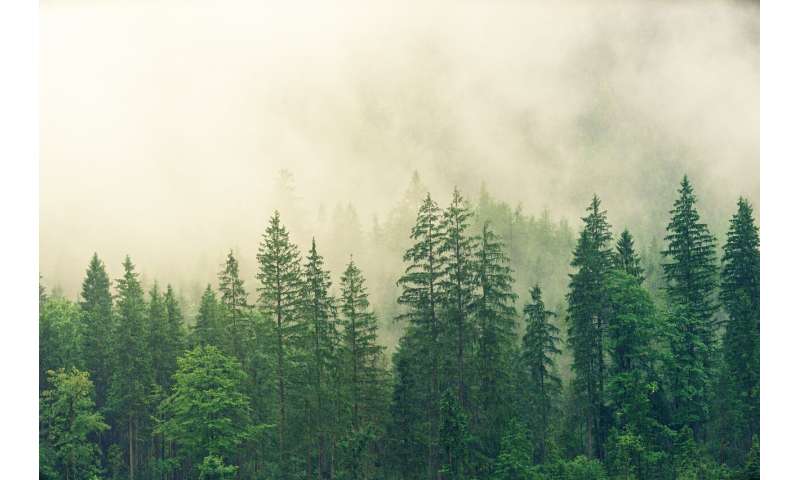Scientists have discovered how global warming pushes forest boundaries

Scientists from Russia, the United States, Britain and Italy are exploring the impact of climate transformation on the forests of the Altai Mountains. In the 20th century, the average annual temperature there increased by 1.4 to 1.7 Field studies, dendrochronological data, and images from drones and satellites all showed a rapid shift of the forest border up into the mountains. The scientists believe that in the 21st century, the dynamics of these processes in Altai and elsewhere on the planet may be 100 times greater, which will affect local ecosystems. Their research results are published in the journal Scientific Reports.
Scientists from TSU (Russia), Purdue University (U.S.), University of Catania (Italy), University of Sheffield (UK), and TSU graduate students from Italy, Russia, and China conducted their research at the TSU high-altitude station Aktru.
According to Terry Callaghan, one of the authors of the article, professors at TSU and University of Sheffield, the location for the project was chosen because mountain ecosystems, along with the Arctic, are the first to respond to the temperature increases on the planet. Of no small importance was the fact that regular research by TSU scientists on the northern slope of the North Chuy Range began in 1957. Over 70 years, they have accumulated a significant amount of data, including meteorological data.
While studying the state of forests in the Altai highlands, the researchers analyzed a mass of information. They compared dendrochronological and meteorological data of the last century, analyzed samples taken during a recent expedition, and compared these with survey data from satellites and drones.
The results showed that the displacement of the forest border relative to sea level accelerated significantly in the second half of the last century. At the beginning of the 20th century, the border of the forest was at an altitude of 2,150 meters above sea level. Over 52 years, the trees moved up to about 2,200 meters above sea level and continued to grow at this altitude for 34 years (from 1965 to 1999). From 1996 to 2006, a marked change occurred—young trees appeared at around 2,250 meters. Between 1994 and 2002, some trees reached even higher elevations and appeared at about 2,300 meters.
The authors of the article note that further climate variability is predicted, with a general increase in temperature and extremely dry and hot periods. Such events have a significant impact on mountain forest ecosystems, where an increase in temperature enables many species of trees to settle at higher elevations and find favorable ecological niches.
According to data obtained at TSU stations and the bases of other SecNet members created to study Siberia and the Arctic, a similar trend is observed in the tundra (Khanty-Mansi Autonomous Okrug), where trees are moving northward under the influence of climatic effects.
A similar situation exists in some other regions—China and North America. Studies suggest that in temperate regions, trees migrate naturally for several kilometers per century. This can be seen in the long-term photographic record used to document the displacement of alpine forest heights into alpine meadows in Yunnan province in southern China. In North America, modeling the distribution of tree species due to climate change suggests a total movement of 134 eastern tree ranges in the northeast direction.
In the future, this change will lead to the transformation of many ecosystems, including the appearance of some representatives of flora and fauna and the disappearance of others. It is still difficult to assess the unambiguously upcoming environmental changes, but some may also adversely affect human well-being. So, for example, the forest boundary moving to the north in the tundra could lead to a reduction in traditional vegetation, including lichen, which is the main fodder crop for reindeer.
According to the authors' forecast, serious climatic changes may lead to a faster shift of trees and increase the speed of their movement by 100 to 1000 times relative to the natural rates of migration.
Currently, a group of scientists led by Terry Callaghan is preparing a new publication, which will include systematic data from 600 literary sources in literature and new research results.
More information:
Roberto Cazzolla Gatti et al. Accelerating upward treeline shift in the Altai Mountains under last-century climate change, Scientific Reports (2019). DOI: 10.1038/s41598-019-44188-1
Provided by Tomsk State University